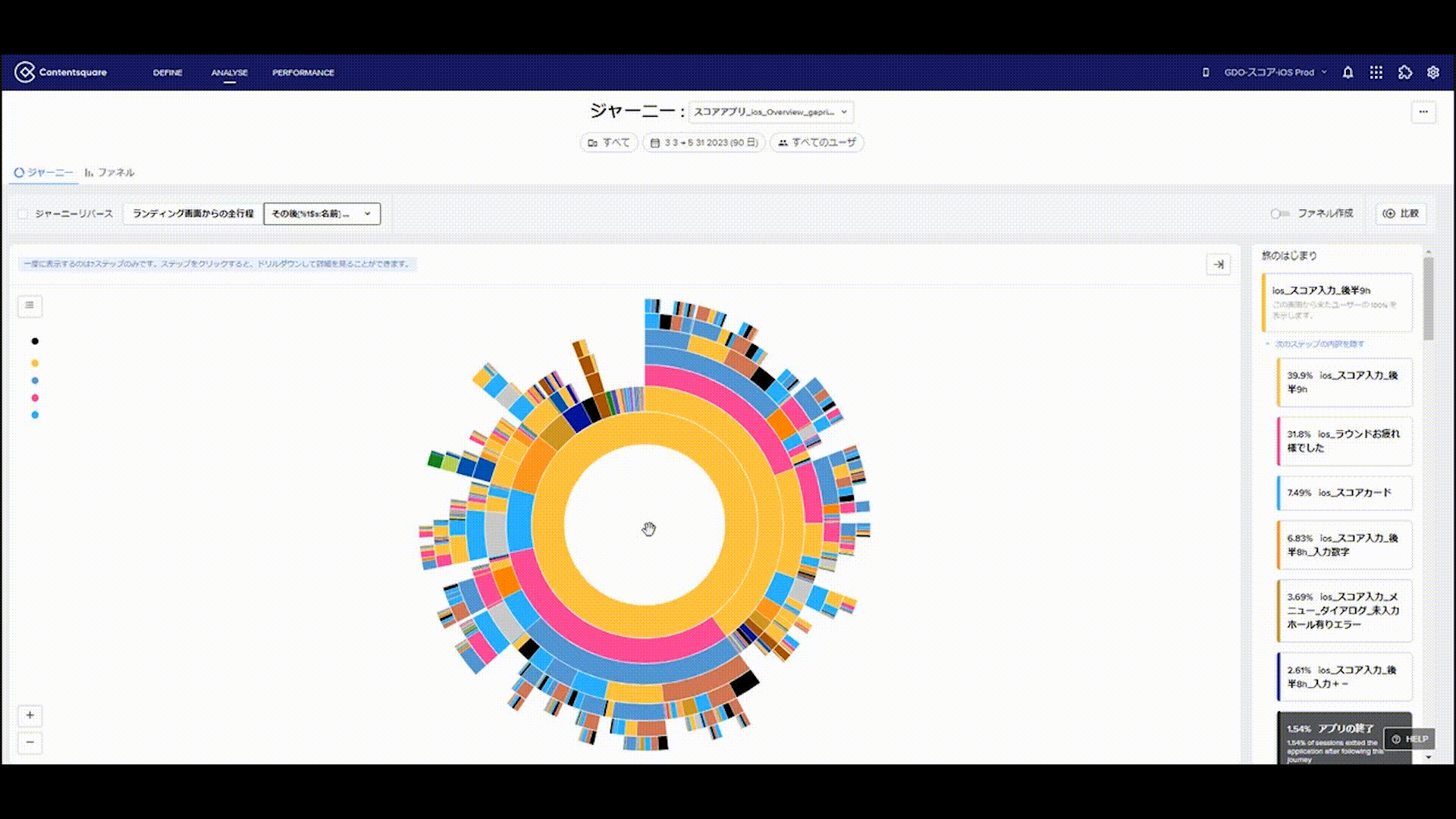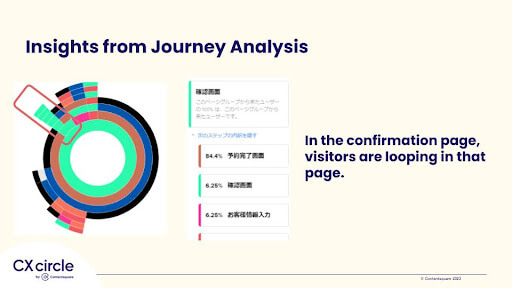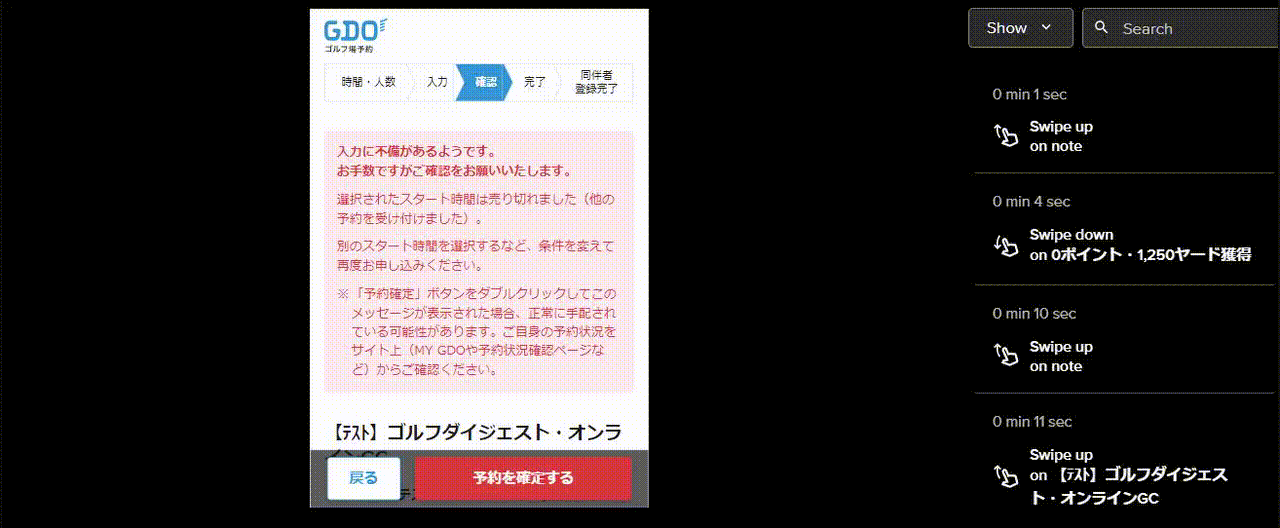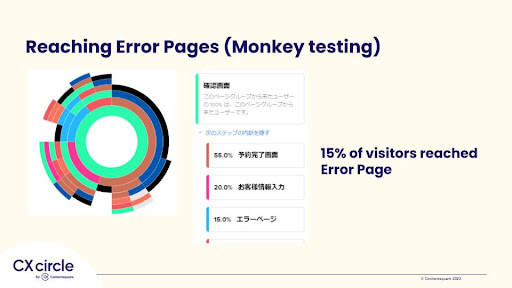Golf Digest Online on the value of improving customer experience

The importance of improving the customer experience
No one wants a bad user experience. Improving customer experience is essential as it boosts customer satisfaction and loyalty, provides a competitive advantage, increases conversions and sales, reduces customer churn, fosters a positive brand perception, and facilitates data-driven decision-making. Prioritizing a seamless online customer journey enhances a business’s reputation, attracts new customers, and ensures long-term success.
However, you first need to truly understand your customer. Speaking at CX Circle Toyko, Golf Digest Online’s CMO/CIO Tomoyuki Shiga and Gaprise’s Customer Success Team Manager Yosuke Kamata, how they used data from Contentsquare to understand user behaviour to improve UX and resolve errors.
Golf Digest Online (GDO) provides golf-related Internet Services such as golf equipment sales and golf course reservations. They also operate other businesses such as media management, lessons, DX for driving ranges, score management applications, and a portal site.
It goes without saying that a seamless online experience is crucial for their success.
Using Contentsquare to Improve UX
Working in cooperation with their golf course reservation business division and verifying their golf score management application in partnership with Gaprise, GDO realized that new bugs could occur as an inadvertent result of UX improvements.
They used Contentsquare to analyze the GDO golf score management application to identify bottlenecks. A golf course typically has 18 holes, and once the scores for all holes are entered into the app, the round is complete. The challenge with their app was that there were many instances where users left the app without saving their scores after inputting their scores for the entire round. Without saving the data, the purpose of using the app for users is lost.
GDO was able to identify the percentage of users that were leaving, but they didn’t know why they were leaving without saving, so they turned to Contentsquare’s Journey Analysis.

Yosuke Kamata explains. “This screen depicts data collected at the 18th hole; we drilled down to see what users did in the application after completing their game. While some users were able to complete saving after inputting the information and others could input it again, there were instances where errors occurred. Upon closer analysis, we found that users who encountered errors were following a repetitive journey of reviewing the scorecard and then looking at the scorecard again. We then drilled down using Session Replay to verify what screens the users who followed this journey were actually looking at.

In this image, users were experiencing an error message that said data could not be saved because some information had not been entered despite users filling in everything. This resulted in users returning to the scorecard entry page to check and then leaving the app.
GDO realized that the reason for this error (framed in red) was not because of their score but that the people they were playing with had not entered all of their scores. This is only depicted as a tiny dash, which makes it easy for users to overlook. Further, the app is meant to track only their own scores and not that of their companions.
Thanks to Contentsquare, they were quickly able to fix this issue.
Using Contentsquare to reduce time spent on user testing
User testing products is a time-consuming process that requires considerable resources. For GDO, this process follows this flow before launching a new product:
- Requirements are defined
- Implementation
- Acceptance testing
For a new golf course reservation system, GDO wanted to see if they could use Contentsquare to help streamline the process and reduce the resources required. They created 2 segments of users: 1 that knew how to use the system and 1 that could not understand the UI. Typically, GDO would only user test with 5 people due to limited resources, but were able to work with 78 people this time.

“We created a journey in Contentsquare based on a sample of 78 users and found that during the booking process, there was looping behaviour on the confirmation before the journey was complete.” Yosuke Kamada said. To understand the reason behind this, they used Session Replay.

In the first line of this error message, users were informed that their entry was incomplete. However, the third line states that “the start time is sold out”, which indicates that their reservation choice was fully booked. This led to users being confused and unable to complete the booking and tried to solve the problem by returning to the previous page. However, the original page is structured so that they cannot return to it, so they get stuck and drop off.

The team discovered a further problem: 15% of users reached the error page without the same looping behavior. The reason for this was later discovered due to a system error – and it was thanks to a tag-team of Contentsquare’s Journey Analysis and Session Replay that GDO was able to understand user behavior and uncover errors ahead of launching their product.
“It is very likely that these problems would not have been uncovered in our typical user test of about 5 people. Also, if an error occurs only a few times, we might have missed it. But with session replay, all errors are recorded, and we can fix it by following user behavior throughout their journey.” Yosuke Kamada said.
He ended the session with a parting message: “I found it very good in that [Contentsquare] allows us to work on positive improvements. Session Replays clearly reflect user behavior, so developers and marketers have a common understanding of journeys and problems. I think the key is that everyone can work on solving issues together and be aligned with the user’s point of view.”



